”As a conductor of his own compositions he was incomparable […] His music, frequently rugged in contrasts and daring leaps, is also insinuating and suave at times, and so too was his conducting; one moment he would be high in the air, the next crouched under his desk; one moment he would menace the drummer, and the next flatter the flutist; now he would draw long threads of sound out of the violinists, and anon lunge through the air at the double basses, or with some daring remark help the violoncellists to draw a cantilena full of love-longing out of their thick bellied instruments. His musicians feared him and his demoniac, sarcastic face, and wriggled to escape unscathed from his talons.’’ Anton Seidl on Hector Berlioz
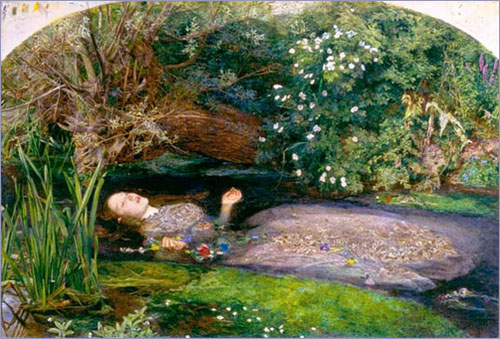
John Everett Millais. Ophelia''The Pre-Raphaelite Brotherhood was formed in 1848 by William Holman Hunt, John Everett Millais and Dante Gabriel Rossetti. Their manifesto was to reject the classical artistic style and aesthetic of the last three hundred years and return to the style prior to that of Raphael – hence their name. They focused on nature, capturing the brilliant colours and detail they found around them together with complex poses. Millais’ Ophelia is such a study of death surrounded by the beauty of nature.
Paris certainly had never known a composer so deeply committed to the idea of music as an art that ”sets in vibrations the most unexplored depths of the human soul” Like Beethoven, who had expressed himself as a Bacchus pressing out the grapes that made men spiritually drunken, Berlioz wanted to awaken a whole world of feelings and sensations that had not even existed before.
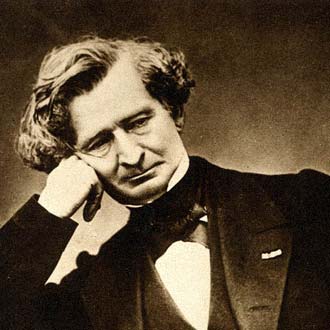
Battle scarred and melancholy, Berlioz sat for this photograph in 1863, the year Les Troyens a Carthage premiered in Paris
Berlioz’s aim was to endow music with all the expressive power of poetry and to depict everything by means of effect. He was not concerned about melody in the least; he was an excellent music critic for La Gazette Musicale and was very capable of defending his musical innovations in the press. It was Berlioz’s way to employ grandiose means to produce grandiose effects. His music, which tried to express too much, often required written commentary. Beethoven’s example, which he invoked, did not, for most people, justify his eccentricities. However, to deny Berlioz was a melodist on the ground that his phrases covered a wider span than those of other composers, or to denounce his harmonic progressions by text-book standards , is not necessarily conclusive. Judgement upon the aesthetic value of his music is still divided. For Berlioz, technical dissection by itself has never advanced the question; it has merely complicated the conditions of it.
”Berlioz allows his listeners absolutely no chance not to discover him in his music – which led to vehement reproach among German composers of his day: Robert Schumann decried lapses of taste in parts of the symphony’s programme, especially in the finale. And the influential Viennese critic Eduard Hanslick was completely baffled by the composer’s musical self-revelation: “Berlioz liked in conversation to emphasize that he had written it in his life’s blood. Yes, blood is ‘a juice of very special kind’ [Goethe: Faust]. But we want to be warmed and invigorated with it, not doused.”
Such reservations notwithstanding, the premiere of Berlioz’s Symphonie fantastique at the Paris Conservatoire on 5 December 1830 marked the beginning of new musical era: the age of “ego exploration”, to which Peter Gay dedicated his study The Naked Heart. As the Berlin-born American cultural historian demonstrates, “the 19th century was intensely preoccupied with the self, to the point of neurosis. During the very decades of the most sustained campaign for master of the world ever undertaken, bourgeois devoted much delightful and perhaps even more anxious time to introspection.” Considered against this background, Berlioz surely accomplished what he had resolved to do even before writing the Symphonie fantastique: “to stagger the musical world” and to become “a colossus in music”. Jürgen Otten, Michael Stegemann (Berlioz)
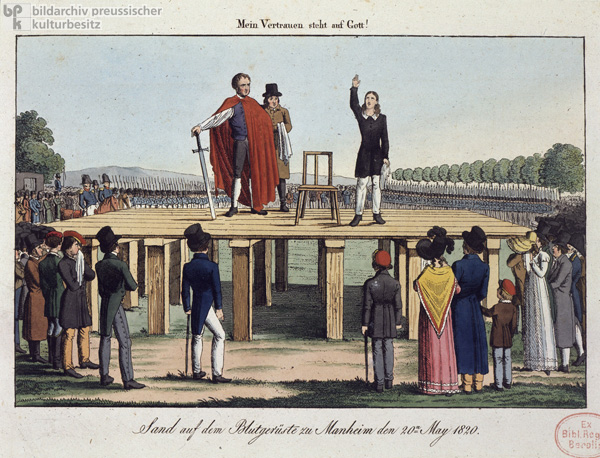
''On March 23, 1819, Karl Ludwig Sand (1795-1820) murdered the dramatist and conservative politician August von Kotzebue (born 1761), who had made disparaging remarks about national-democratic student fraternities in his weekly, Literarisches Wochenblatt. ''
For Berlioz there are clear associations between music and the body: music can have a profoundly sublime affect upon his physical sensations, bypassing his rational mind to produce uncontrollable gestures. When Berlioz took to the podium, however, this relationship become complex; now, it was Berlioz’s physical gestures that had an affect upon the music. The one-way relationship between music and the body became a problematic symbiosis between the two – which influences which, and through what medium? that medium was gesture. Gesture was a blossoming aesthetic genre in Paris at the time: sign-language had been established in the previous century and was becoming more widespread; mime exploded with Gaspard Deburau’s Theatre des Funambles; and, with Habeneck and especially Berlioz, conducting developed a new vocabulary of gestures.
Throughout these fifty or so years there was incredible interest in the aesthetics and pathology of the body, of gesture, of movement, and in a philosophical search for a universal `biological’ language. In artistic spheres this became manifest in the search for the embodiment and physicality of genius, an exploration of the relationships between abstract inspiration and a very physical, often uncontrollable, bodily reaction. Berlioz was wholly caught up in this rhetoric:
”On hearing certain pieces of music my vital forces seem to increase twofold; I feel an exquisite pleasure carried to a degree of violence rather entirely independent of my mind; habits of analysis then come of themselves to induce admiration; emotion, which grows in direct proportion to the energy and grandeur of the composer’s ideas, soon produces a strange agitation in my veins; my heart beats violently; tears, which ordinarily signal the end of the paroxysm, frequently mark only a stage of it, to be exceeded by far – in such cases there are spasmodic contractions of all my muscles, a trembling of all my limbs, a total numbing of my hands and feet, a partial paralysis of the optic and auditory nerves, my vision goes dark, I can barely hear; dizziness… near-faint.”
Surprisingly, Berlioz was extremely limited as a musician. However,Berlioz’s contributions to conducting, however, are unquestioned and well documented as a turning point in the art. Despite this, history has chiefly left us with Berlioz the composer as the locus for musicological thought, and its very divisive views on what constitutes aesthetics. We easily and frequently debate, for example, the relationships between his Symphony Fantastique and Romanticism, the fantastic, autobiography, and literary criticism, yet rarely do we examine the performance of the work under the composer’s direction, as a piece generated by his physical gestures. Berlioz epitomized the notion of the divided-self of the Romantic artist, and the concept of the genius as a bodily, not abstract, phenomenon.
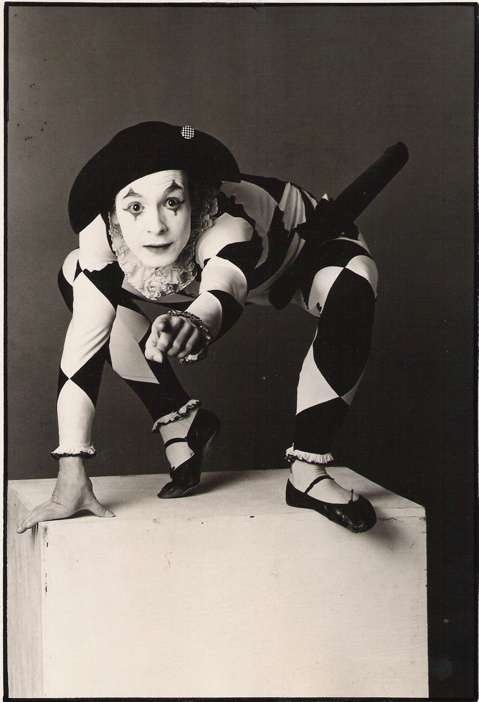
www.amoeba.com:''Mime has its roots in ancient Greece but most conventions of modern mime were developed by the Bohemian mime, Jean-Gaspard Deburau, who adapted aspects of the commedia dell'arte for nineteenth century French actors. His most famous character was Pierrot, the moonstruck, dumb romantic in white face and poofy threads. He was portrayed in Marcel Carné's Les Enfants du Paradis. ''
”Berlioz once wrote: “The mass of the Paris public [regards] all music that deviates from the narrow path where the makers of opéras-comiques toil and spin… the music of a lunatic.” The Second Empire struck Berlioz as an age of insipidity, without seriousness, launched on a course – like Faust in his earlier opera La Damnation de Faust (1846) – towards the abyss. Less than a year after Berlioz’ death from cancer, the Second Empire would disintegrate under the Prussian advance, giving birth to yet another republic.
An editorial cartoon from the time of Les Troyens à Carthage at the Théatre-Lyrique strikingly corroborates Berlioz’ sense of his era, both musically and politically. The cartoonist, “Charivari,” depicts Greek soldiers with their hands covering their ears running away from a masonry wall behind which is seated an orchestra; above the orchestra a banner flies, which reads, “Partition des Troyens,” or “The score of Les Troyens.” The caption says: “Comme quoi les Grecs auraient certainement levé le siege devant Troie si les Troyens avaient eu la partition de M. Berlioz en temps utile.” (“If only the Trojans had armed themselves with Mr. Berlioz’ score, they would certainly have repelled the Greek attack.”) The sensibility of the Second Empire inclined to the buffoonery of Jacques Offenbach’s Belle Hélène and Orphée aux enfers; it preferred Italian bel canto opera and Gounod, but Berlioz it could not understand.” ( Bertonneau )


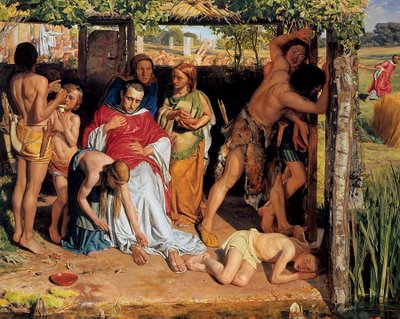



 COMMENTS
COMMENTS